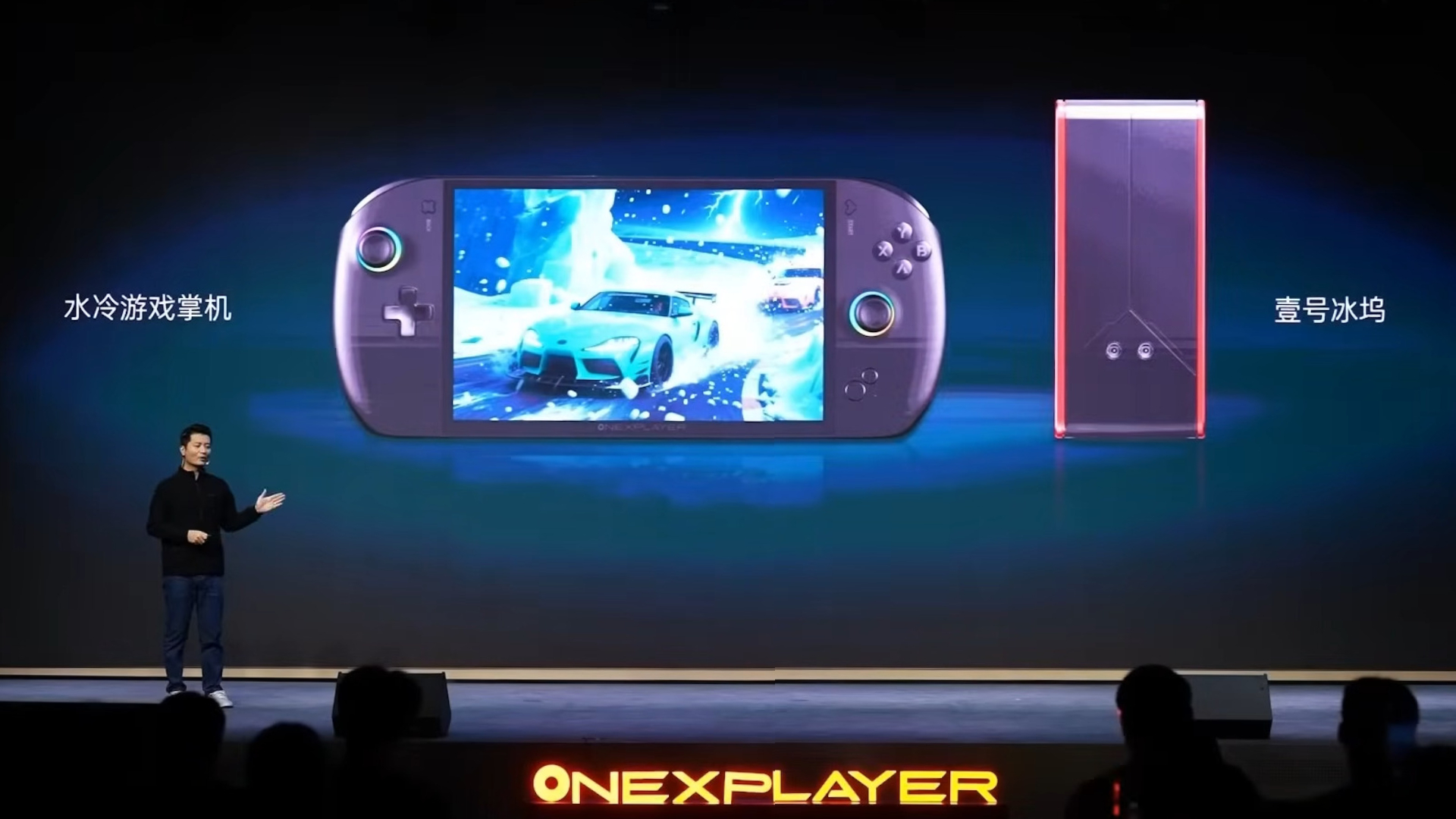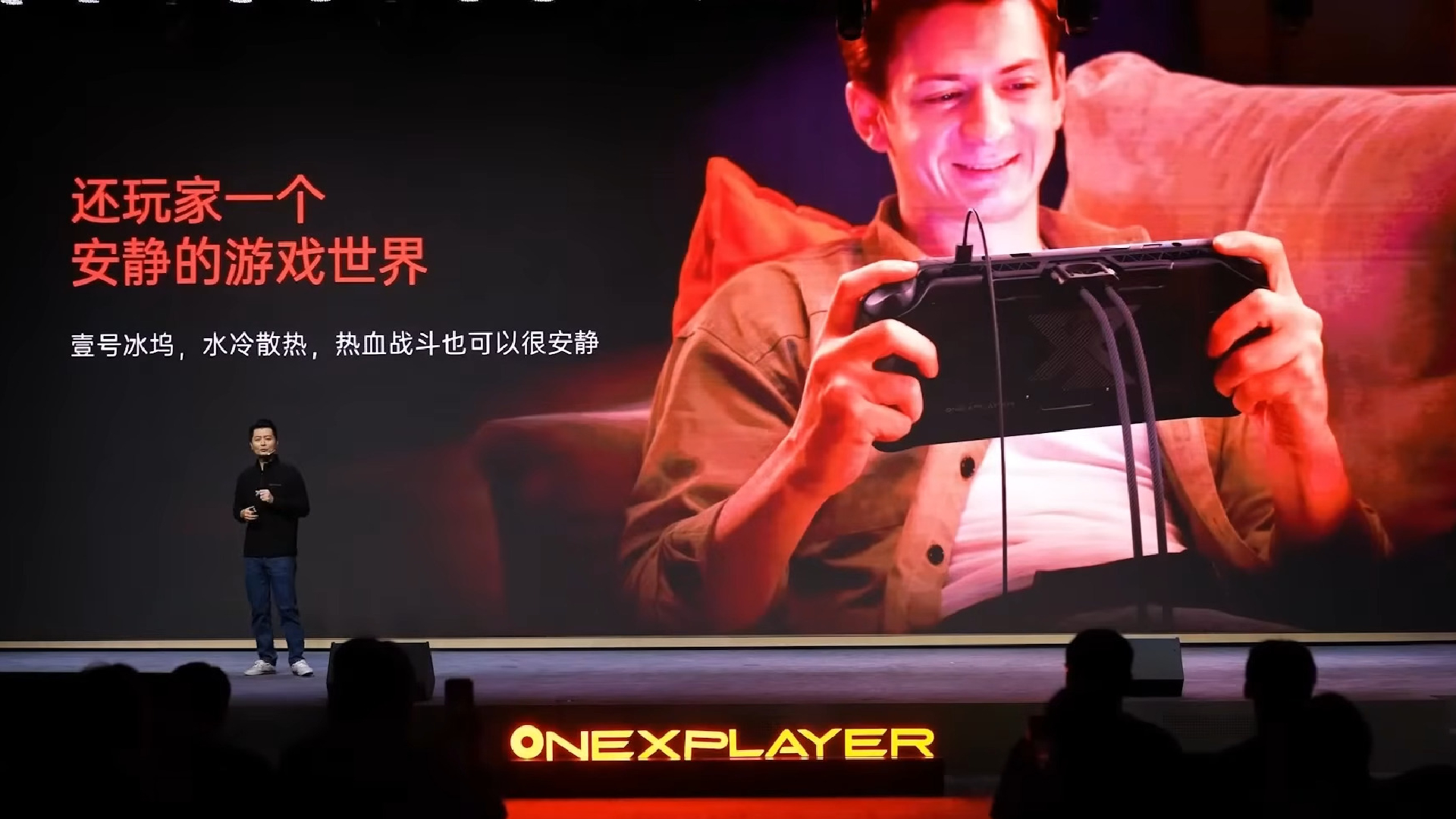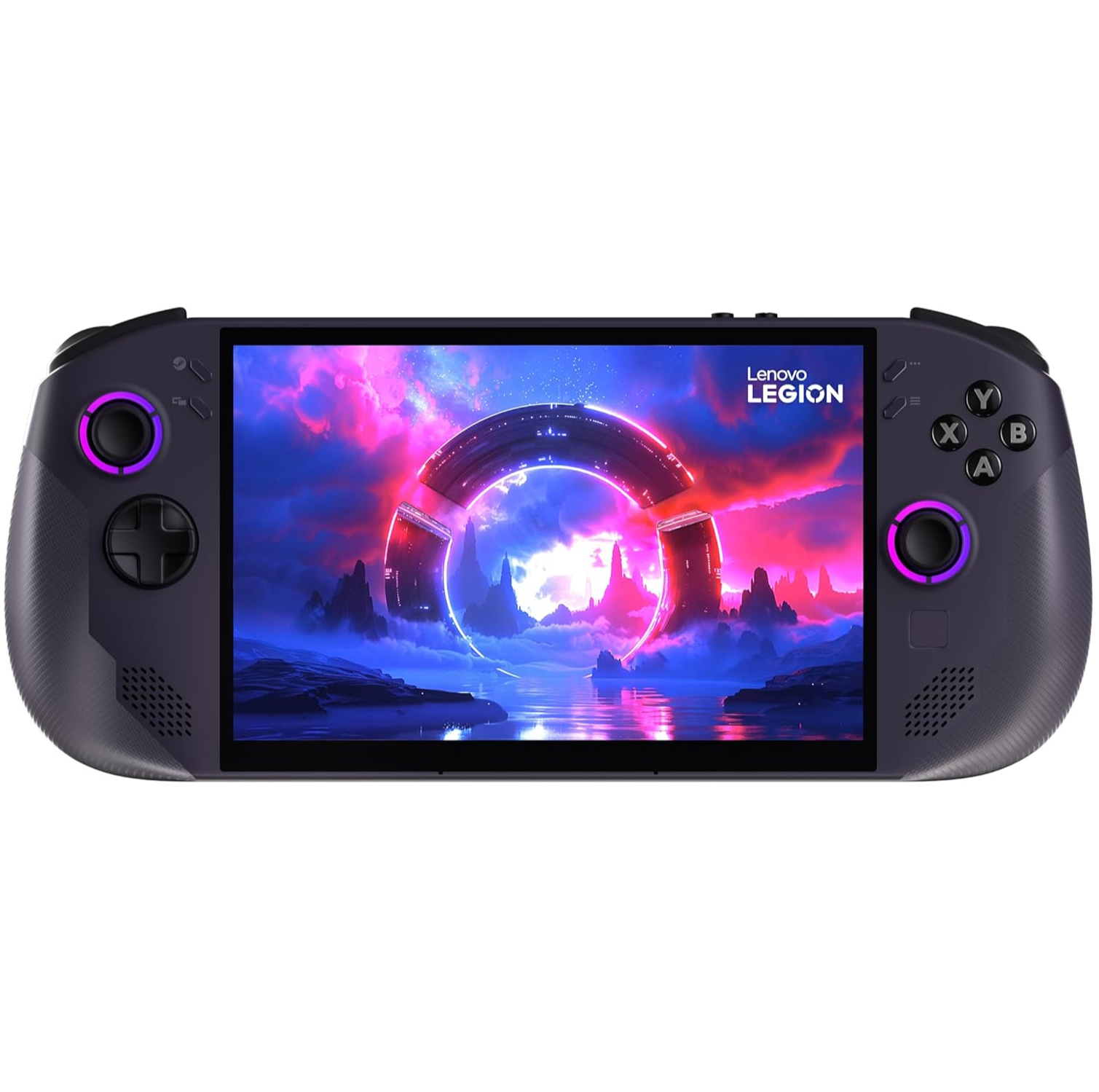The OneXFly Apex has an optional external liquid cooling tower to help keep things chill, which kinda defeats the point of a handheld gaming PC if you ask me
Hoses. Just what I always wanted.

When is a gaming handheld not a gaming handheld? Well, I'd argue it's when you need to strap a bunch of external devices to it in order to get the most out of it, which is exactly what's happened to the Strix Halo-powered OneXPlayer OneXFly Apex.
It's a seriously impressive-looking device on paper, with what initially appears to be a relatively slim 8-inch form factor, given the massive Ryzen AI Max 395 APU tucked inside (via Videocardz). However, as our Jacob found when he reviewed the Asus ROG Flow Z13 with the also-chonky Ryzen AI Max 390 chip at its core, it's not easy to make a portable device with one of AMD's mega-APUs without making some compromises.
In the case of the ROG Flow Z13, one of those compromises was a massive power brick. In the OneXFly Apex, that appears to have translated to a swappable 85 Wh external battery pack, which is very reminiscent of the GPD Win 5, another Strix Halo-powered handheld with an extra juice box.
To be fair, the OneXFly Apex's solution looks a whole lot neater, as it clicks into the back of the chassis in a way that means you might not notice it at first glance—although I'd be willing to bet you'd likely notice the weight. It's not just an external battery that seems to be required to get the most out of the Ryzen AI Max 390, though, as the Apex is the first gaming handheld we've seen with an external liquid cooling solution.
How does that work, I hear you cry. Well, with a chonky connector and a couple of liquid cooling tubes attached to an external cooling tower, that's how. The chip is said to be capable of a sustained 80 W TDP in pure handheld mode, and can potentially reach a massive 120 W TDP with the cooling device attached. Yes, it's optional, thankfully, although you'll likely be leaving a fair amount of performance on the table without it.

All this juice-enhancing and cooling tomfoolery will likely make the Apex the fastest gaming handheld by far, and one that seems designed to put the GPD Win 5 in its place. It's a great way of grabbing a top spot on the handheld performance leaderboards, I grant you, but I can't be the only one wondering if this is really stretching the definition of a handheld gaming PC into truly ridiculous territory.
Yes, the presentation slides show a very happy customer holding one, so it's technically, well, hand-held. But with a bunch of cables, hoses, and battery additions hanging out the back, I can't really see what's being gained here other than the technical achievement.
Keep up to date with the most important stories and the best deals, as picked by the PC Gamer team.
Which is grand, don't get me wrong. I'm all for manufacturers pushing the limits of hardware, if for no other reason than to prove it can be done. But when it comes to picking a handheld gaming device, I can't be the only one wishing they were becoming more portable, rather than less.
Anyway, even in regular ol' handheld mode, it's likely to be very fast, although it looks like you'll have to pay for the privilege, as the pricing starts at the equivalent of $1,200 for the 32 GB version, sans liquid cooler.
Those are Chinese market prices, so I'd say it'll end up being a fair bit more expensive than that when it reaches Western shores, especially for the full package. And as for the cooling tower? Well, you can leave it at home. I mean, you'll have to. No one's plugging that in on the train, are they? In fact, don't answer that. Someone will try, I'm sure.

1. Best overall:
Lenovo Legion Go S SteamOS ed.
2. Best budget:
Steam Deck
3. Best Windows:
MSI Claw 8 AI+
4. Best big screen:
Lenovo Legion Go
5. Best compact:
Ayaneo Flip DS

Andy built his first gaming PC at the tender age of 12, when IDE cables were a thing and high resolution wasn't—and he hasn't stopped since. Now working as a hardware writer for PC Gamer, Andy spends his time jumping around the world attending product launches and trade shows, all the while reviewing every bit of PC gaming hardware he can get his hands on. You name it, if it's interesting hardware he'll write words about it, with opinions and everything.
You must confirm your public display name before commenting
Please logout and then login again, you will then be prompted to enter your display name.

